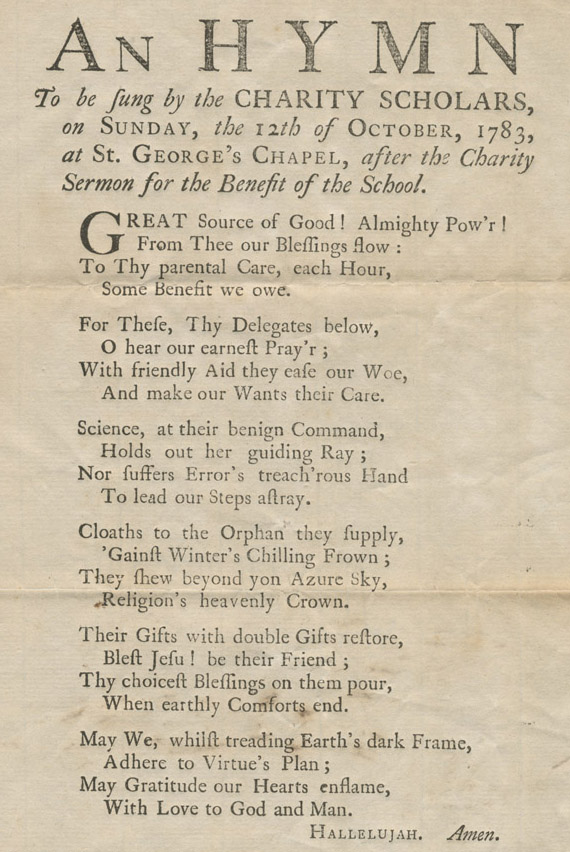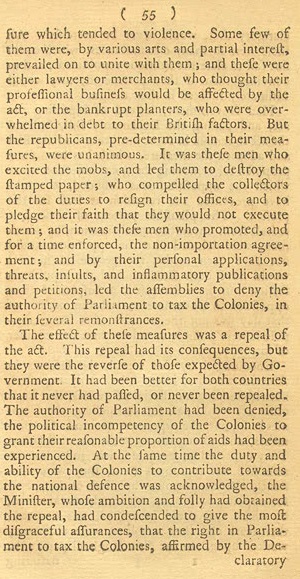Lesson Plan One: Religion
Activities
Flag Activity

Gostelowe Standard No. 10, c. 1776
Watercolor once in possession of Edward W. Richardson. Copyprint Courtesy of the Pennsylvania Society of Sons of the Revolution and Its Color Guard (91)
Citation source: http://www.loc.gov/exhibits/religion/obj-list.html
What symbols do you see?
What words or phrases do you see?
Who does this flag represent?
Hymn Activity

This resource is in the Maass archive
What does this hymn tell you about society and religion during the 1800s?
"Popcorn" Activity
Students select out interesting phrases and words from the text. Then, they read these phrases and words out in any order that feels right--responds to other readings, they like the rhythm,etc. The class then debriefs what they heard, what images and themes stood out, etc.
Religion as Cause of Revolution
Joseph Galloway (1731-1803), a former speaker of the Pennsylvania Assembly and close friend of Benjamin Franklin, opposed the Revolution and fled to England in 1778.
 |  |

 -->
-->
Historical and Political Reflections on the Rise and Progress of the American Rebellion [page 54] - [page 55]
Joseph Galloway, London: G. Wilkie, 1780
Rare Book and Special Collections Division, Library of Congress (81)
Citation source: http://www.loc.gov/exhibits/religion/obj-list.html
"SOAP" Activity
A visual organizer for reading original documents:
| Subject | Objective | Audience | Perspective |
|---|---|---|---|
| What is this document about? | Why was is written? | Who was it written for? | From who's perspective is it written? |
Cartoon Analysis
Figure out what's happening in this cartoon.

An Attempt to Land a Bishop in America
Engraving from the Political Register, London: September, 1769
John Carter Brown Library at Brown University, Providence, RI (86)
Citation source: http://www.loc.gov/exhibits/religion/obj-list.html
"SPAM" Activity
A visual organizer for analyzing political cartoons, pictures, or photographs.
| Symbols | People | Actions | Message |
|---|---|---|---|
| What symbols do you see? | Are there any people? | What kind of action is going on? | What do you think the author's message is? |
Summary / Essay
Now that you have analyzed and interpreted the primary sources, you will now have to write a 2-3 paragraph explaining whether or not you think the American Revolution was religiously motivated. Use the documents to support your argument. Your completed activities should also help you out. Then, you will be placed in groups of four to discuss your position on this focusing question.
